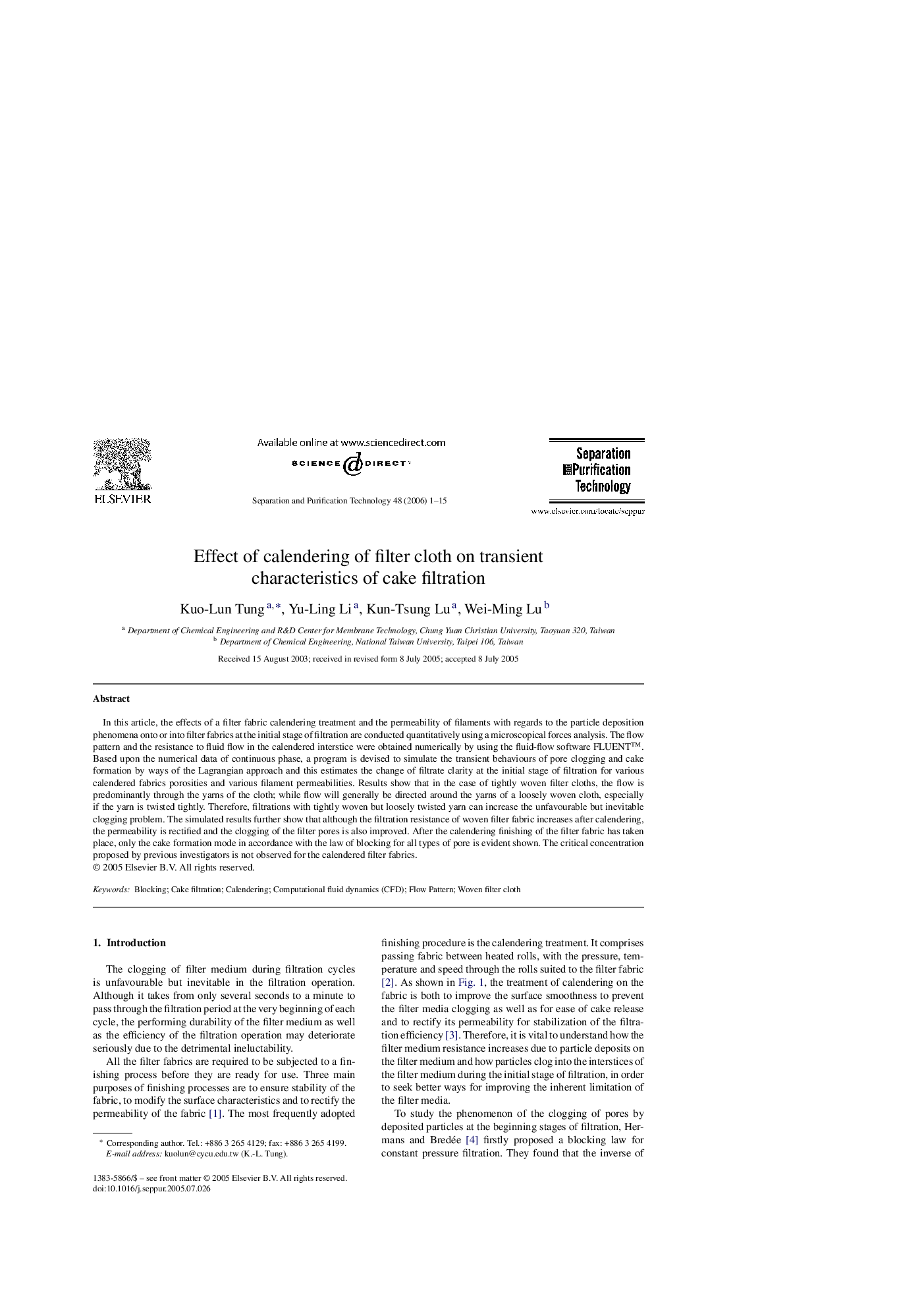| Article ID | Journal | Published Year | Pages | File Type |
|---|---|---|---|---|
| 644311 | Separation and Purification Technology | 2006 | 15 Pages |
In this article, the effects of a filter fabric calendering treatment and the permeability of filaments with regards to the particle deposition phenomena onto or into filter fabrics at the initial stage of filtration are conducted quantitatively using a microscopical forces analysis. The flow pattern and the resistance to fluid flow in the calendered interstice were obtained numerically by using the fluid-flow software FLUENT™. Based upon the numerical data of continuous phase, a program is devised to simulate the transient behaviours of pore clogging and cake formation by ways of the Lagrangian approach and this estimates the change of filtrate clarity at the initial stage of filtration for various calendered fabrics porosities and various filament permeabilities. Results show that in the case of tightly woven filter cloths, the flow is predominantly through the yarns of the cloth; while flow will generally be directed around the yarns of a loosely woven cloth, especially if the yarn is twisted tightly. Therefore, filtrations with tightly woven but loosely twisted yarn can increase the unfavourable but inevitable clogging problem. The simulated results further show that although the filtration resistance of woven filter fabric increases after calendering, the permeability is rectified and the clogging of the filter pores is also improved. After the calendering finishing of the filter fabric has taken place, only the cake formation mode in accordance with the law of blocking for all types of pore is evident shown. The critical concentration proposed by previous investigators is not observed for the calendered filter fabrics.
